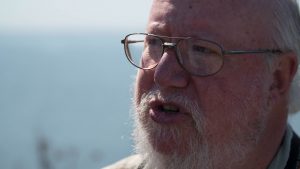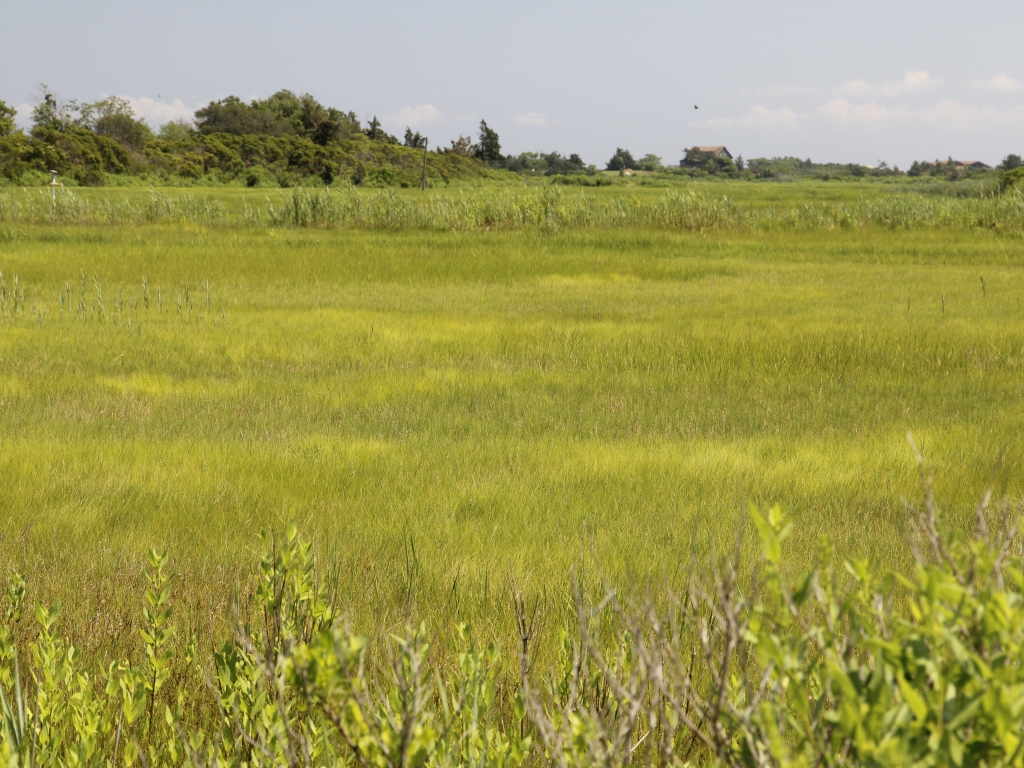Episode 45: Dystopia

This week, we have stories about immigrants facing misunderstandings and confusion in their interactions with the criminal justice system. Plus, the popular Hulu series “The Handmaid’s Tale” prompts us to look back at the New England Puritan culture that provided the underpinnings for Margaret Atwood’s dystopia. And we take in nature’s bounty at one of New England’s underappreciated destinations: Long Island Sound.
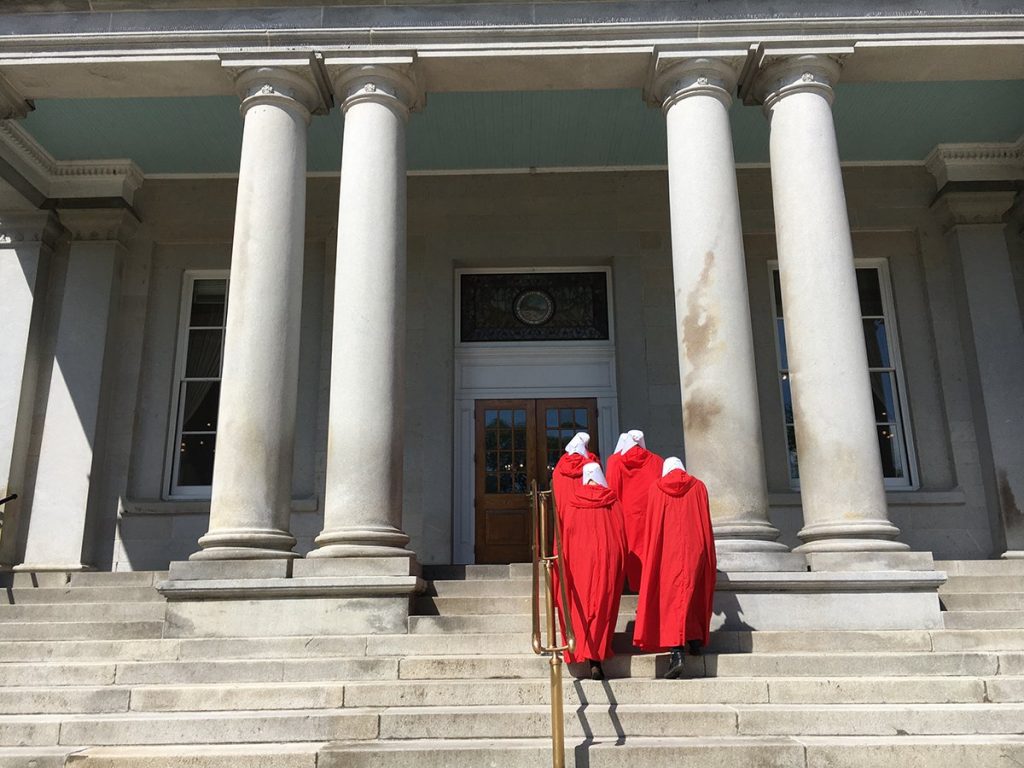
Women dressed like “handmaids” — fertile women forced into sexual slavery in the Hulu drama “The Handmaid’s Tale” — ascend the steps of the New Hampshire statehouse on June 1 to protest a bill that would define a fetus as a person in cases of homicide. Photo by Casey McDermott for NHPR
Charged
We’ve been following the stories of immigrants to New England who face obstacles while trying to navigate the American law enforcement and criminal justice system.
New Hampshire Public Radio’s Emily Corwin is following the story of Joyce Chance, a refugee from the Congo, who’s now out on bail after spending three weeks in jail for charges of child abuse. The state says she’s a danger to her community, but many in that community disagree. As Emily reports, cultural misunderstandings and language barriers are getting in the way.

Jose Flores speaks to WBUR about the events leading up to his arrest by federal immigration agents with his wife Rosa Benitez. Photo by Jesse Costa for WBUR
A felony, or even a lesser conviction, could get a refugee like Chance sent out of the country. But what if you’re in the country illegally, and don’t have a criminal record? What if the biggest mark against you is an accident you had on the job?
Jose Flores, a Honduran immigrant living in Massachusetts, fractured his femur in March when he fell from a ladder at a Boston construction site. After Flores filed for worker’s compensation, a manager at the construction company that employed him asked for a meeting. Just after the meeting, Flores was apprehended by ICE.
WBUR’s Shannon Dooling has been following his story — and what it tells us about the new realities of undocumented workers during the Trump administration.
Don’t Hate on Long Island Sound

Meigs Point at Hammonasset Beach State Park is a glacial moraine that you can hike across. The boulders here were pushed south from the Connecticut hills during the last ice age. Photo courtesy of Patrick Lynch
We’ve heard in recent episodes how nitrogen gets into the Connecticut River, and flows downstream into Long Island Sound. There, it feeds algae, which reduces oxygen in the water, killing off fish and other marine life in a condition called hypoxia. Nitrogen pollution, among other factors, has contributed to the Sound’s less-than-glowing reputation among the region’s waterways.
The good news is the overall health of Long Island Sound is improving. Since the EPA implemented a nitrogen reduction program in 2001, hypoxia has decreased by 40 percent, and fish and marine mammals that had been absent or struggling for decades are coming back.
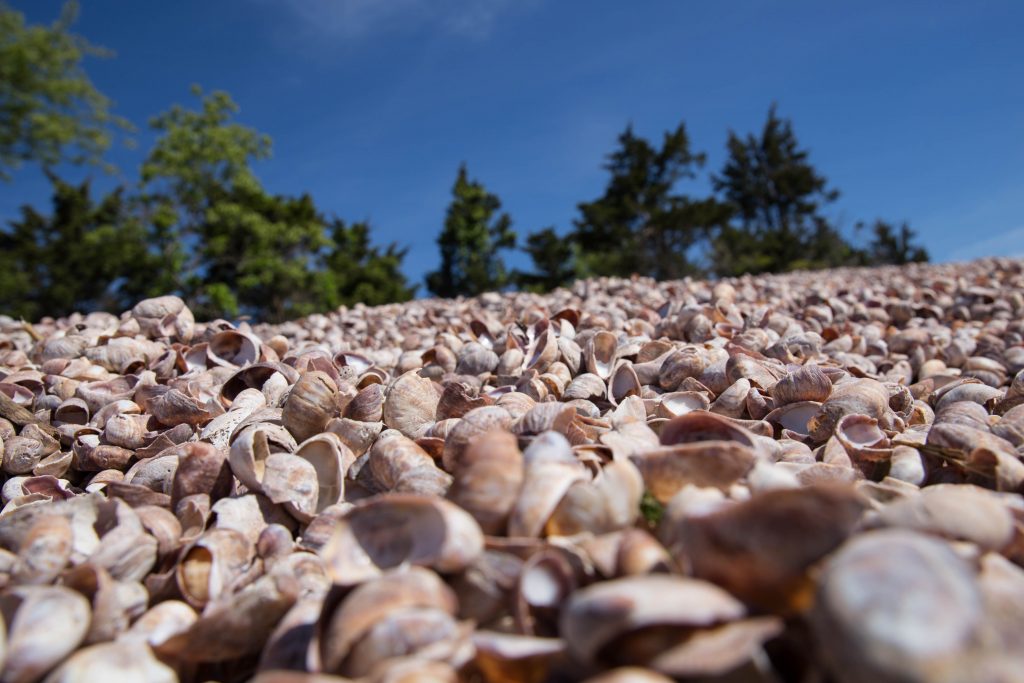
A beach at Hammonasset Beach State Park is made up entirely of slipper shells. Photo by Ryan Caron King for NEXT
But while oxygen levels improve, sea level rise and warming waters are causing other changes to the Sound that are much more difficult to reverse.
Author Patrick Lynch provides a snapshot of these changes, as well as beautiful illustrations of birds, fish and the variety of habitats along the shore in his new Field Guide to Long Island Sound.
We caught up with Lynch at beautiful Hammonasset Beach State Park in Madison, Connecticut.
The Handmaid’s Tale and the Puritans
New England is both the literal and symbolic the setting of “The Handmaid’s Tale,” the hit Hulu drama starring Elisabeth Moss as Offred, a young woman forced into sexual slavery in a dystopian near-future.
In the series, the United States has been overthrown and replaced by an oppressive new country called Gilead. The patriarchal leaders have used the near total collapse of fertility in the country to institute a kind of theocracy. The handmaids, including Offred, are women who are still fertile.
The series is based on the eponymous novel by Margaret Atwood, written in 1985 as a response to the Islamic Revolution in Iran and the rise of the Christian right in the United States. With the launch of the Hulu series in April, many have reflected on the series as a commentary on the current political moment. In recent months, women dressed in handmaids’ red cloaks and white bonnets have shown up at state houses to protest legislation that would restrict abortion or grant person-hood to fetuses.
But here at NEXT, we were curious about the story’s connections to New England’s Puritan past. In Atwood’s new introduction to the book, she writes:
“The Republic of Gilead is built on a foundation of the 17th-century Puritan roots that have always lain beneath the modern-day America we thought we knew.”
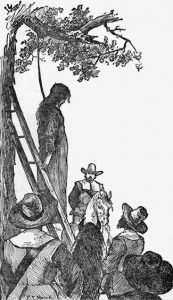
An illustration depicting the execution of Ann Hibbins for witchcraft on Boston Common in 1656. Public hanging is a common punishment in the Handmaid’s Tale. Sketch by F.T. Merril, 1886.
Atwood has said that her setting for the book was inspired by the time she spent as a graduate student at Radcliffe College in Cambridge, then the women’s counterpart to Harvard. She dedicated the novel to Perry Miller, a Harvard scholar of American Puritans with whom she studied, and also to Mary Webster, a Massachusetts woman who was hanged for witchcraft and survived — and may have been one of Atwood’s ancestors.
So how closely does the dystopia of “The Handmaid’s Tale” reflect the utopia the Puritans attempted to create on these shores?
For answers, we turn to two historians who have studied women, sexuality, and religion in 17th Century New England. Rebecca Tannenbaum is a Senior Lecturer of History at Yale, and Kathy Cooke is a professor of History at Quinnipiac University.
About NEXT
NEXT is produced at WNPR.
Host: John Dankosky
Producer: Andrea Muraskin
Executive Producer: Catie Talarski
Digital Content Manager/Editor: Heather Brandon
Contributors to this episode: Emily Corwin and Shannon Dooling
Music: Todd Merrell, “New England” by Goodnight Blue Moon
We appreciate your feedback! Send praise, critique, suggestions, questions, reflections and story leads to next@wnpr.org.

